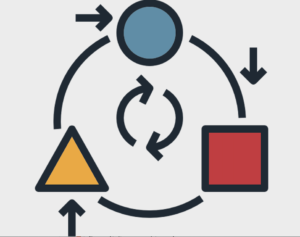19 Jul Leading with inner agility
The COVID-19 crisis, accelerating change and the geopolitical tensions of interdependence are amongst the profound, long-term phenomena making organisational agility an urgent global imperative. Witness rampant rethinking of business models, rapid embracing of digitalisation and adoption of radically different workplace practices. These disruptions call for transformational leaders.
My post today outlines the challenge these leaders face and what personal practices can help them cope personally and professionally.
Key concept: Inner agility
Other than direct experience, little is known about the cognitive and emotional load that the  changes in the environment and their organisations place on leaders. To be effective in reinventing – even rescuing – their organisations, leaders cannot afford to neglect themselves or believe they are somehow immune from the impact of different types of stress, anxiety, sense of loss – and even depression.
changes in the environment and their organisations place on leaders. To be effective in reinventing – even rescuing – their organisations, leaders cannot afford to neglect themselves or believe they are somehow immune from the impact of different types of stress, anxiety, sense of loss – and even depression.
Leaders need to develop inner agility. As with physical agility, your mental muscles can be trained to give you inner agility comprising a combination of intellectual acuity, emotional strength and mindfulness. Inner agility is the coping mechanism that enables you to adapt quickly and decisively in the face of uncertainty and complexity.
The benefits of inner agility include preservation of self and others’ wellbeing and productivity.
Applying the concept of inner agility
The McKinsey authors explain that even experienced leaders faced with fast-moving,
uncertain situations often fall victim to analysis paralysis, over-simplification and acting before stopping to think. The better way is to become comfortable with uncertainty and inventive about managing risk and ambiguity. Here are five ways to practise inner agility.
- Set direction, not destination. In volatile, uncertain, complex and ambiguous (VUCA) environments, do not try to take the straight line from point X to point Y. Rather, engage your team in a journey guided by a vision, not just hard milestones.
- Test your solutions – and yourself. Adopt the catch cry of tech startups, it applies to all organisations: Fail fast. Fail often. Learn. Becoming a learning organisation (this link is a 5’ video by the guru Peter Senge) is a path to prosperity.
- Ask the right question. Apply Albert Einstein’s famous aphorism, ‘If I had an hour to solve a problem…I would spend the first 55 minutes determining the proper question to ask, for once I know the proper question, I could solve the problem in less than five minutes.’
- Embrace your own naivety. No one has a mortgage on clever ideas. Listening to others, especially those outside your immediate network, helps unblock your beliefs. Acknowledge your ignorance and don’t be shy to ask others for help.
- Pause to move faster. As I wrote in Controlling your emotions, learn to stop in the moment and make space between the provoking stimulus and your response. Doing this gives you time to pause, get in touch with all facets of the situation, think outside the box and make your decision.
- In this post, I have drawn extensively on Leading with inner agility, a 2018 McKinsey Quarterly article by Sam Bourton, Johanne Lavoie and Tiffany Vogel
- My April 2020 post Leadership in a (prolonged) crisis


